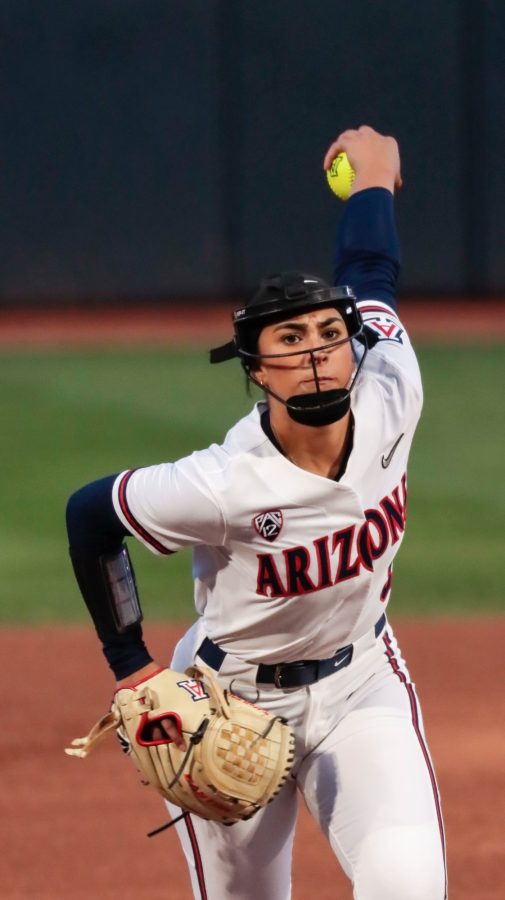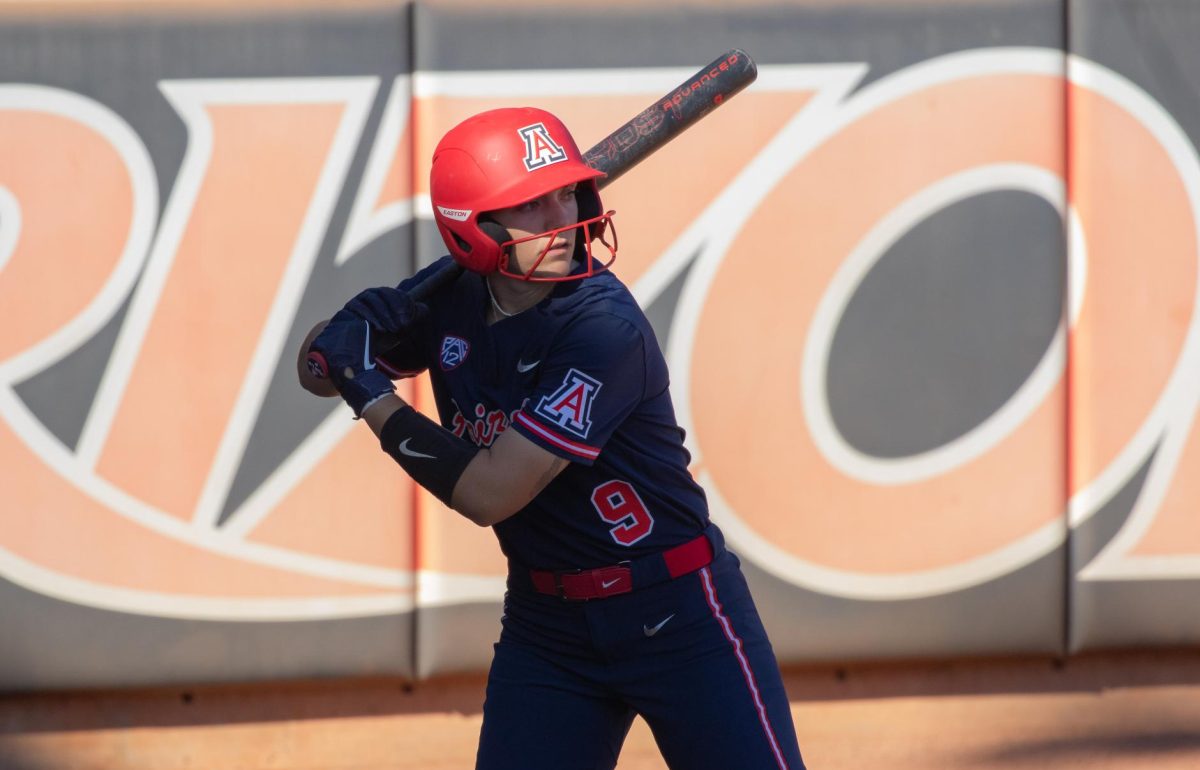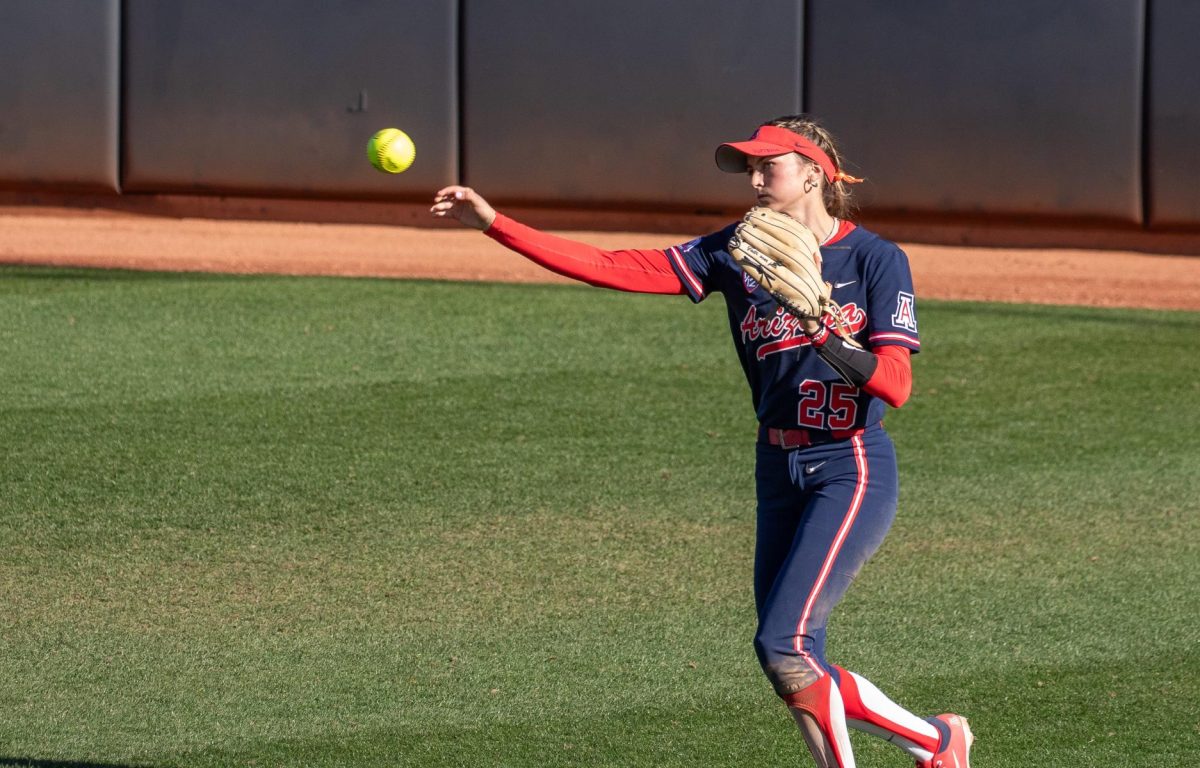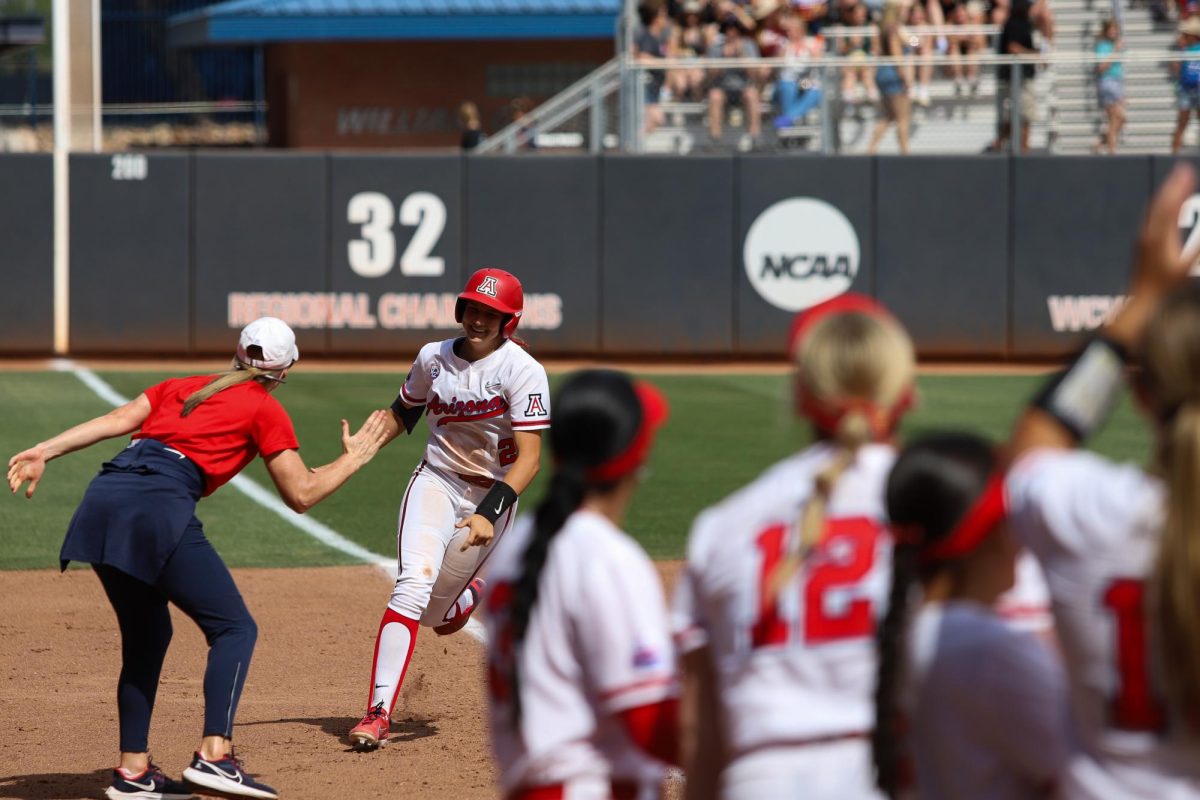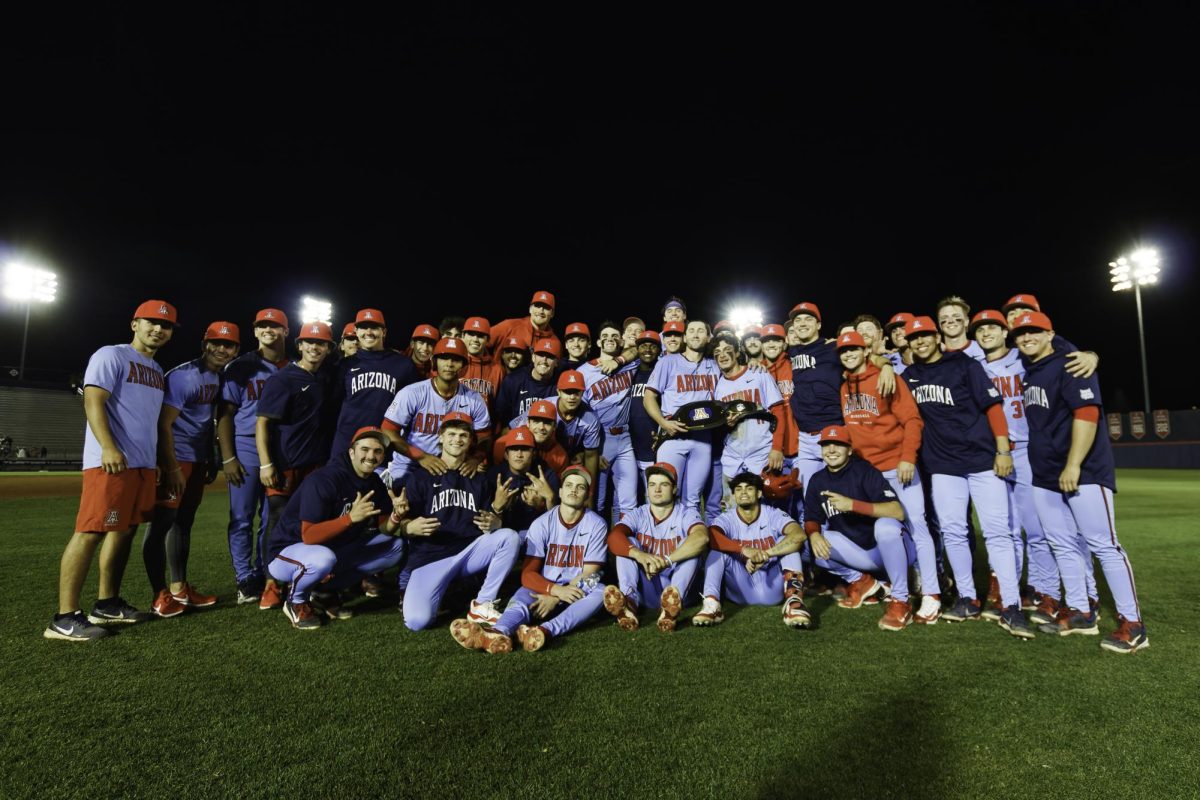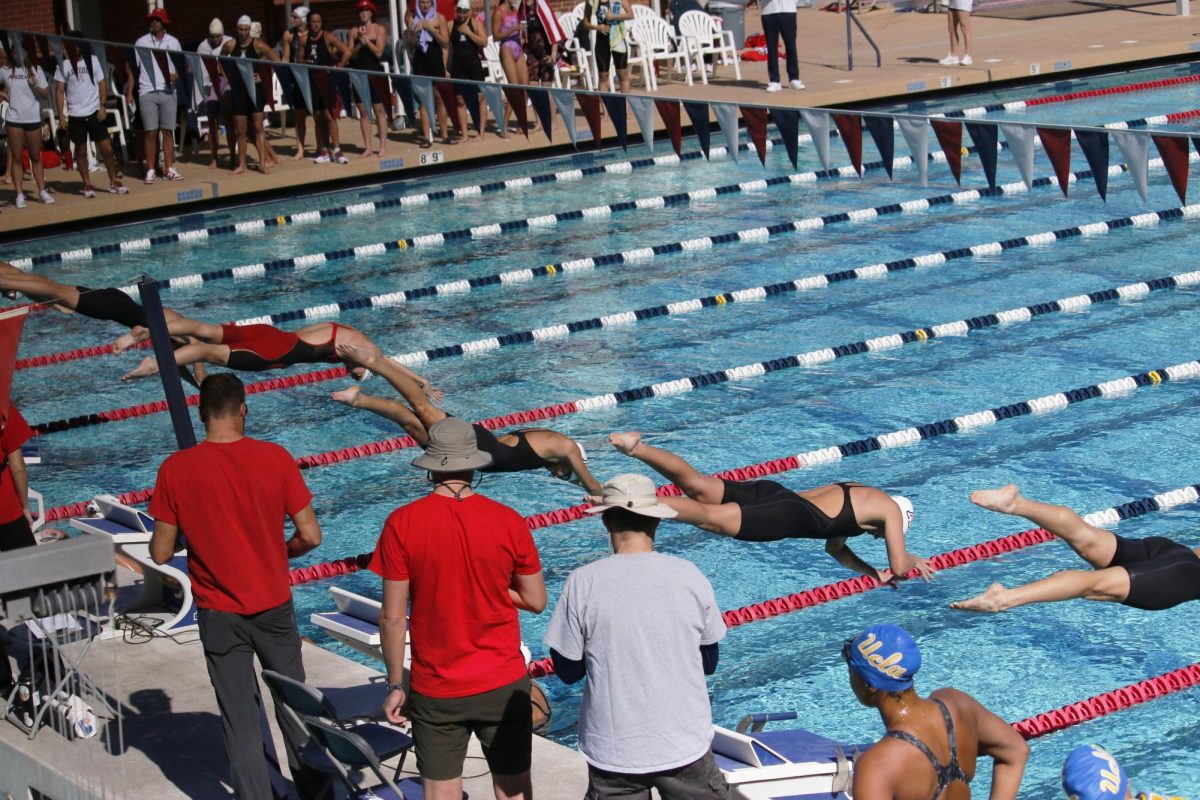As NCAA recruiting practices have changed over the years, coaches and players have found both good and bad aspects of the process by which athletes choose their dream college.
Even at Hillenbrand Stadium, where six freshmen will soon put on Arizona softball uniforms for the first time, UA head coach Mike Candrea’s program is making adjustments to a more complicated recruiting process.
“”I feel like each year the recruits commit earlier and earlier,”” said freshman pitcher Kenzie Fowler, who committed to the Wildcats when she was 15 years old. “”It’s hard to say if a girl that young knows exactly what they want for their life.””
Fowler’s case is a bit misleading — she was born to be a Wildcat. Both of her parents attended Arizona and her family has ties to Candrea.
Sometimes the steps recruits take during their high school years are not as straightforward as Fowler’s, who herself said the decision to become a Wildcat was never in question.
Take Fowler’s teammate, freshman third baseman Matte Haack, as an example.
After her graduation from Katy High School in Katy, Texas, Haack’s commitment to Kansas University was eventually broken.
“”I was really excited. I had family that lived there. I was born there, my dad (Kalum Haack) coached there,”” Haack said of becoming a Jayhawk. “”It was a really good choice for me.””
Then, 13-year head coach Tracy Bunge retired, and the university was slow about finding a replacement.
“”(Kansas) hadn’t hired a head coach and we were getting frustrated,”” Kalum Haack, who coached the Jayhawks from 1988-95, told The Katy Times last July.
Such situations are common in NCAA softball. But after originally committing to Texas Tech and then-head coach Teresa Wilson during her junior year of high school, Haack got a call.
“”I believe everything happens for a reason,”” Haack said of her de-commitments from Texas Tech and Kansas, “”and I’m so happy that this worked out and that I’m at Arizona.””
From a coaching perspective, the possibility of a high school underclassman committing has caused some problems, most notably in NCAA football and basketball. In softball, and especially at a school with Arizona’s tradition, losing committed recruits hasn’t been an issue.
“”I think it’s more solid in our sport,”” UA assistant coach Larry Ray said of softball recruits keeping their verbal commitments. “”Our word is pretty good, and we’d like to think we received the same thing on the other end.
“”It’s a verbal commitment and it’s not binding,”” he added. “”If the staff happens to leave or change our mind we could certainly and so could the student athlete.””
Still, the younger the high school athletes commit, the more pressure there is on NCAA coaching staffs to determine whether they want to issue an offer to the recruits. Increased emphasis has been placed on scouting more than just the high school seniors.
“”One of the downsides as a coach is we’re not able to evaluate them as fully as we used to,”” Ray said, adding that recruits occasionally contact schools before they’re even on the recruiting radar. “”A lot of it has to do with the parents … taking that recruiting process kind of out of our hands. If we see them at an early stage and we like what we see … we say, ‘Yeah we’d like to see this young lady a part of our program.'””
Despite changed minds and unforeseen circumstances, neither the Arizona coaches nor players appear bothered by how the recruiting environment has intensified for underclassmen in high school. It’s simply part of maintaining the program.
“”I’ve had (former) teammates that were so unsure of where they wanted (to go to college),”” Fowler said. “”They waited until the very last minute … they just committed real late and I’ve also had teammates that kind of jumped the gun.
“”But they’re all doing really well,”” Fowler added. “”It’s just what you make out of it.””
Softball recruiting for dummies
• Prospective student athletes must abide by NCAA regulations beginning their freshman year in high school.
From then onward, a prospective student athlete may take as many non-official visits to schools as they wish, so long as the athlete’s family pays expenses and the contact with coaches is only made on the college campus.
• Athletes may call NCAA coaches but the coach may not “”return phone calls, e-mail, text message or encourage contact of any kind prior to the athlete’s junior year.””
• Beginning Sept. 1 of the athlete’s junior year in high school, coaches may send them recruiting information via any media except by phone.
• On the July 1 after a player’s junior year in high school, coaches may call players or a player’s family once per week. Division I coaches are allowed three off-campus visits with a given recruit.
• The first day of classes in an athlete’s senior year of high school, they may begin official visits to up to five universities with expenses paid for by the visited schools. Coaches may call athletes as much as they want for the five days prior to the visit.
• National Letter of Intent: Athletes may officially sign with schools in the early signing period (beginning the second Wednesday in November of senior year) or in the late signing period (beginning the second Wednesday in April of senior year).
— courtesy of www.NFCA.org





